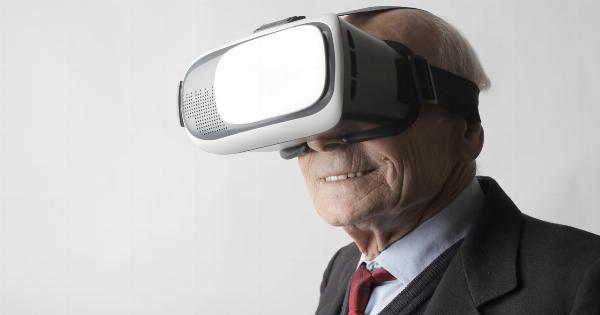Pain has the potential to be a debilitating and distressing experience.
Whether it is physical pain resulting from an injury or chronic illness, or emotional pain stemming from trauma or stress, it can significantly affect our well-being and quality of life. Traditional methods of pain management often involve medication, physical therapies, or psychological interventions. However, more and more research is suggesting that harnessing the power of imagination may provide additional relief.
The Mind-Body Connection: Understanding the Influence of the Mind on Pain
Before delving into how imagination can help alleviate pain, it is essential to acknowledge the mind-body connection. The mind has a profound impact on our physical experiences, including pain perception.
The brain plays a critical role in processing pain signals and generating our conscious experience of pain.
Research has shown that when we experience pain, certain areas of the brain are activated, including the primary somatosensory cortex, insula, and anterior cingulate cortex.
These regions process and interpret pain signals, but they can also be influenced by various psychological factors, such as attention, expectations, and beliefs.
Understanding this bidirectional relationship between the mind and pain is crucial in exploring the potential of imagination as a pain management tool.
The Power of Visualization: Using Mental Images to Alter Pain Perception
Visualization is a widely recognized technique that utilizes the imagination to create vivid mental images. It has been extensively employed in fields such as sports psychology and performance enhancement.
When it comes to pain management, visualization techniques can help individuals alter their perception of pain by diverting attention and manipulating cognitive processes.
By engaging in guided imagery, individuals can transport themselves to a place or situation that brings them comfort and relaxation.
For example, a person experiencing chronic back pain can imagine themselves lying on a warm, sandy beach, feeling the gentle breeze and hearing the soothing sound of ocean waves. This mental escape can distract the mind from pain signals and promote a sense of relief and calmness.
Moreover, visualization can be used to transform the image of pain itself. By visualizing the pain as a color, shape, or object, individuals can abstract it from themselves, making it a separate entity that is easier to manage.
For instance, someone with migraines may imagine the pain as a swirling cloud of dark smoke gradually dissipating into thin air.
The Role of Mental Distraction: Shifting the Focus Away from Pain
Distraction is a powerful ally when it comes to pain management. By consciously redirecting attention away from the pain, individuals can effectively diminish its intensity and impact on their daily lives.
Imagination provides a limitless array of distractions that can be tailored to individual preferences and interests.
Engaging in activities that require mental effort and concentration, such as solving puzzles, reading captivating stories, or playing complex video games, can effectively divert attention from the experience of pain.
By immersing oneself in an engaging and mentally stimulating task, the brain allocates fewer resources to processing pain signals, consequently reducing its perceived intensity.
Additionally, fantasy and daydreaming can serve as powerful mental distractions. Creating intricate narratives and worlds in our minds can transport us to alternative realities, where pain becomes distant and irrelevant.
Whether imagining oneself as a character in a favorite book or exploring uncharted territories in a fictional universe, the mind is capable of generating captivating distractions from pain.
The Influence of Expectations and Beliefs: Harnessing the Placebo Effect
The placebo effect, primarily driven by expectations and beliefs, demonstrates the significant influence of the mind on physical experiences, including pain relief.
When individuals believe that a treatment or intervention will alleviate their pain, the mind activates various mechanisms that can lead to measurable pain reduction.
Imagination plays a crucial role in enhancing the placebo effect.
By envisioning positive outcomes and actively believing in the potential of pain relief, individuals can unlock the mind’s capacity to produce endorphins and other natural pain-relieving substances. This amplification of the placebo effect can have tangible effects on pain management, as demonstrated by numerous studies across different medical conditions.
The Therapeutic Potential of Mindfulness and Meditation
Mindfulness and meditation practices have gained significant recognition for their various health benefits, including pain management.
By cultivating a non-judgmental awareness of the present moment, individuals can observe pain sensations without reacting to them with fear or distress.
During mindfulness meditation, the imagination can be harnessed to foster a state of detachment from pain.
By visualizing the pain as transient and impermanent, individuals can alleviate their suffering and prevent the amplification of pain through rumination and negative emotional responses.
Furthermore, guided imagery meditation specifically designed for pain relief can enhance the mind’s ability to modulate pain signals.
By directing attention to areas of discomfort while simultaneously imagining soothing sensations or healing processes, individuals can promote relaxation and alleviate pain symptoms.
Imagination as an Adjunctive Tool: Collaboration with Traditional Pain Management Approaches
It is important to note that imagination and visualization techniques should not replace traditional pain management approaches but rather be used in conjunction with them.
Imagination can serve as a valuable adjunctive tool to enhance the effectiveness of pharmacological, physical, and psychological interventions.
Integrating visualization techniques into existing pain management strategies can optimize treatment outcomes and overall well-being.
For instance, individuals undergoing physical therapy for chronic pain can incorporate visualization exercises to facilitate muscle relaxation, reduce anxiety, and strengthen the mind-body connection.
The Future of Imaginative Pain Management: Emerging Research and Technologies
As the understanding of the mind-body connection deepens, innovative approaches to imaginative pain management continue to emerge.
Ongoing research explores the potential of virtual reality (VR) and augmented reality (AR) technologies in pain modulation.
VR allows individuals to immerse themselves in computer-generated environments, creating a multisensory experience that can effectively distract from pain.
Studies have shown promising results in using VR to reduce acute pain during medical procedures or manage chronic pain conditions, such as fibromyalgia or phantom limb pain.
Similarly, AR technology can overlay digital content onto the real world, providing an interactive and engaging experience that can serve as a distraction from pain.
These advancements have the potential to revolutionize pain management by providing new avenues for harnessing the power of imagination.
Conclusion
Imagination has proven to be a powerful tool in pain management, serving as a complement to traditional approaches.
By leveraging the mind’s capacity for visualization, distraction, expectation, and belief, individuals can ease their pain and enhance their overall well-being.
As research continues to unveil the potential of imaginative pain management techniques, it is essential to integrate these approaches into holistic and personalized treatment plans.
By recognizing and harnessing the influence of the mind on pain perception, healthcare professionals can empower individuals to actively participate in their pain management journey.































